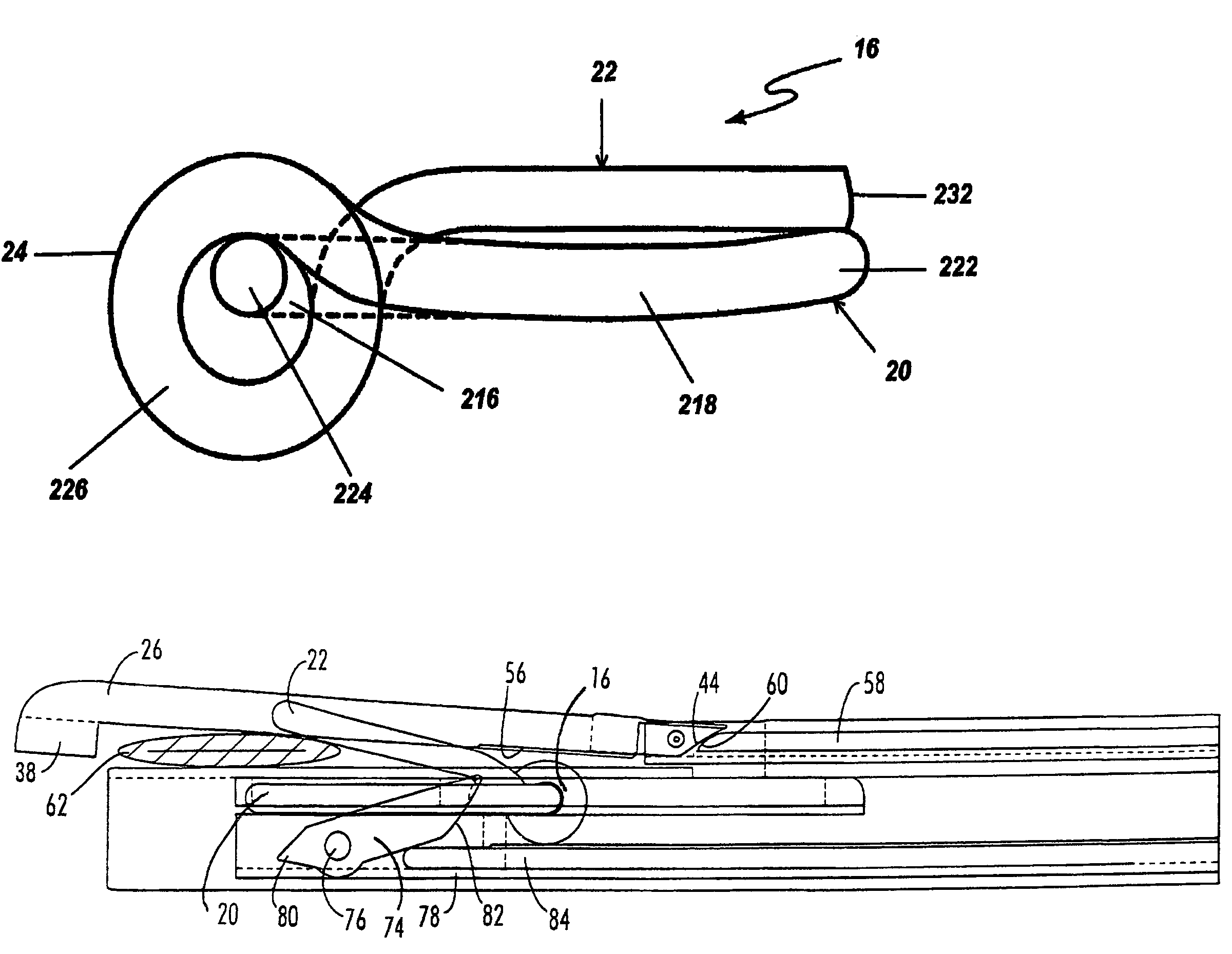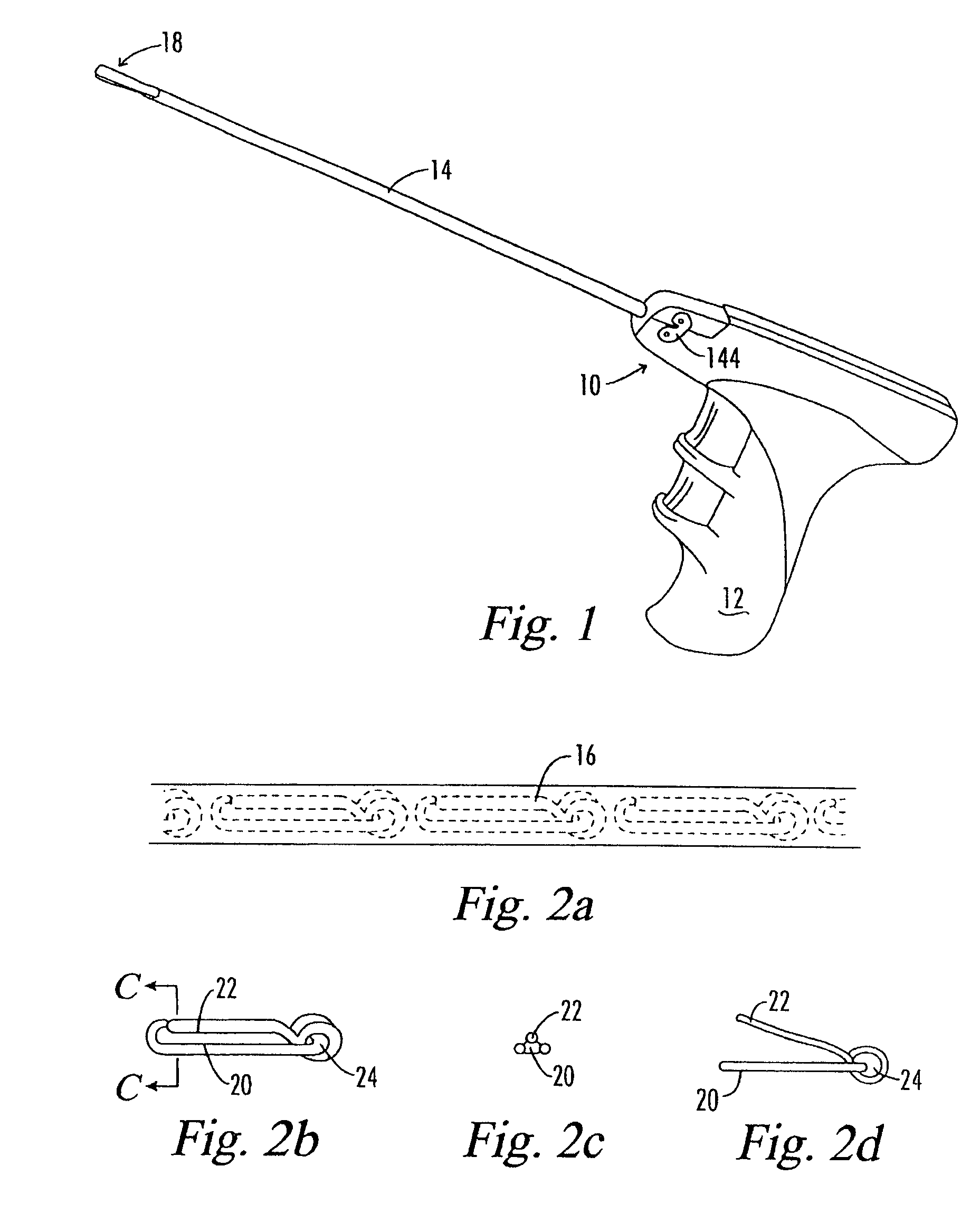Surgical ligation clip and method for use thereof
a technology of ligation clips and surgical instruments, applied in the field of surgical ligation clips, can solve the problems of variable force applied by the ligation clips to the vessel, difficulty in removal or repositioning, and inconsistent force applied by the ligation clips, and achieve the effect of low profil
- Summary
- Abstract
- Description
- Claims
- Application Information
AI Technical Summary
Benefits of technology
Problems solved by technology
Method used
Image
Examples
Embodiment Construction
[0037]Referring now to FIG. 1, there is shown generally the preferred embodiment of the present clip applier. The device is indicated generally by the numeral 10. The device 10 includes the pistol grip 12 and an applicator sleeve 14. The applicator sleeve 14 contains a number of ligation clips 16 all in stacked relation and held in position in the manner hereinafter described. The ligation clips 16 are stacked generally in the trunk portion of the applicator sleeve 14 and extend from the end of the sleeve 14 that is connected to the pistol grip 12 toward the distal end 18 of the device 10.
[0038]FIG. 2b shows the shape and construction of a typical ligation (or surgical) clip 16 which device 10 of the present invention is designed to apply during surgical procedures. Ligation clip 16, additional preferred embodiments of which are shown in FIGS. 2e-2h and FIGS. 2i and 2j, is formed generally of a resilient, continuous, wire type material such as titanium or stainless steel, preferably...
PUM
 Login to View More
Login to View More Abstract
Description
Claims
Application Information
 Login to View More
Login to View More - R&D
- Intellectual Property
- Life Sciences
- Materials
- Tech Scout
- Unparalleled Data Quality
- Higher Quality Content
- 60% Fewer Hallucinations
Browse by: Latest US Patents, China's latest patents, Technical Efficacy Thesaurus, Application Domain, Technology Topic, Popular Technical Reports.
© 2025 PatSnap. All rights reserved.Legal|Privacy policy|Modern Slavery Act Transparency Statement|Sitemap|About US| Contact US: help@patsnap.com



